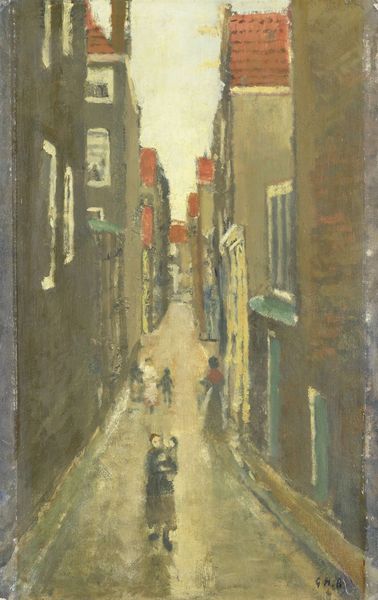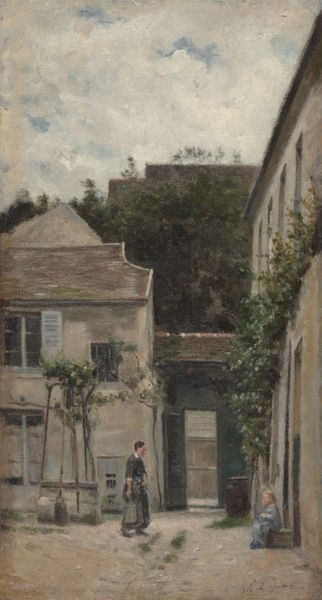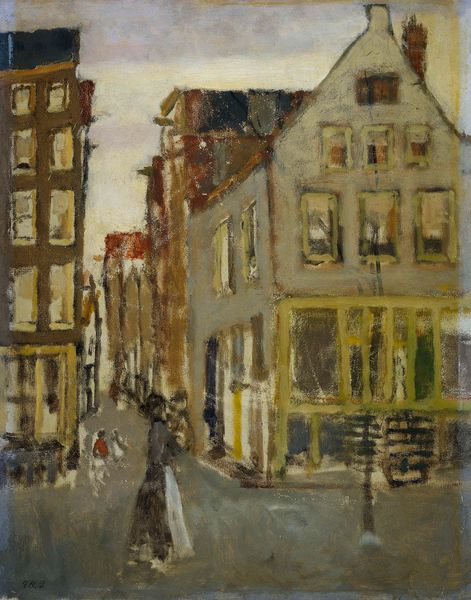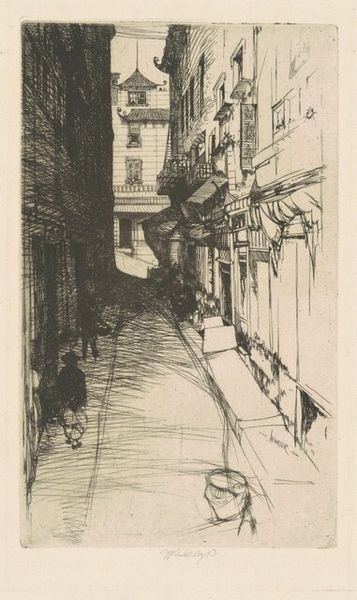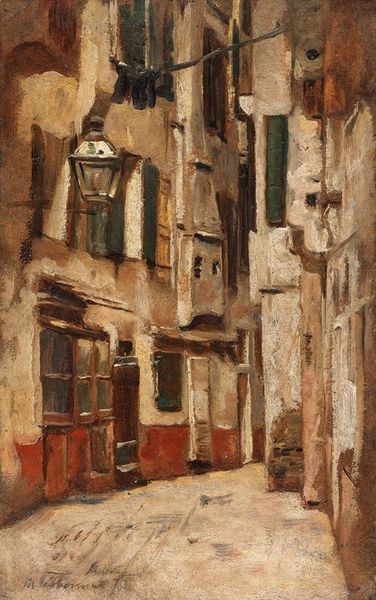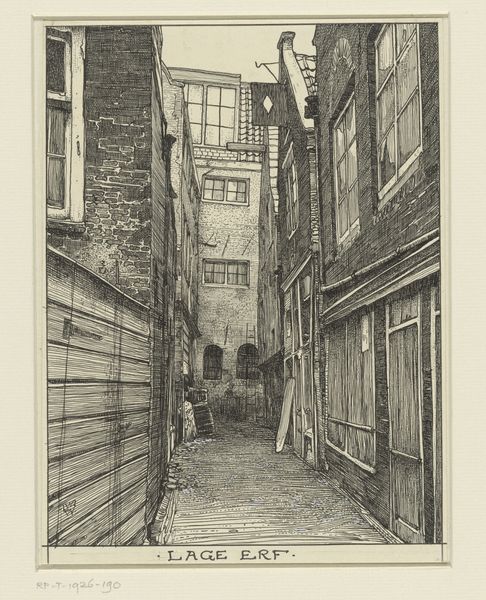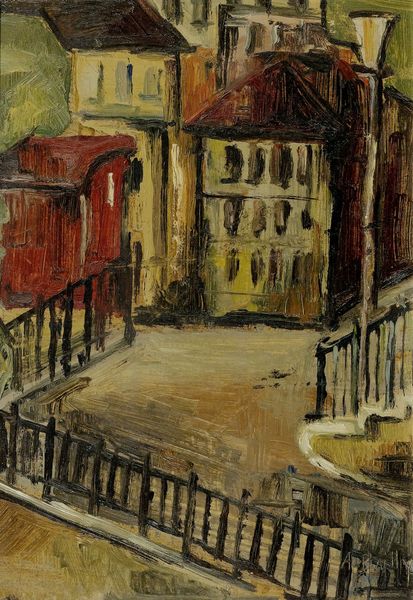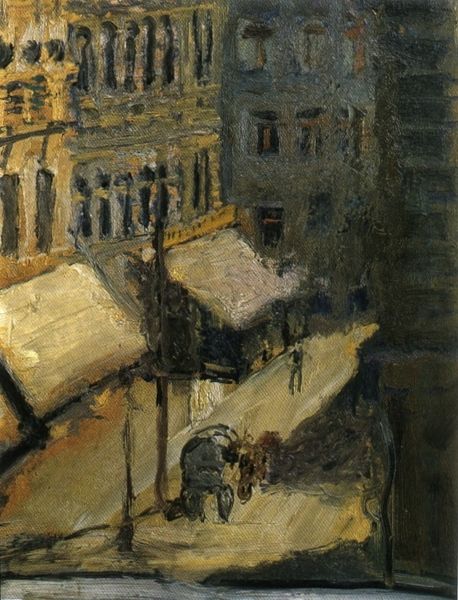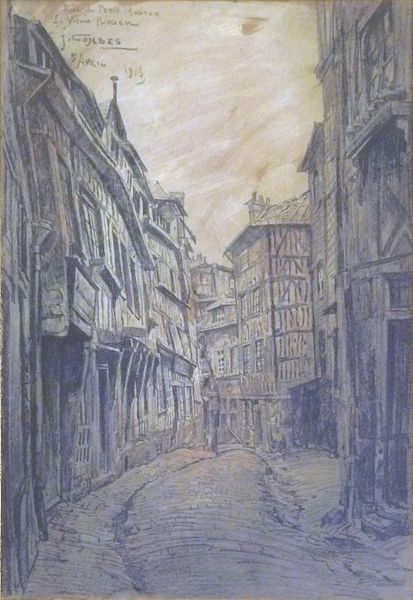
Dimensions: 17.6 x 21 cm
Copyright: Public domain US
Editor: Edward Hopper's "Paris Street," created in 1906 with oil paint, presents us with a muted cityscape. I find myself drawn to the stark contrasts between light and shadow, yet also sensing a quiet emptiness. What do you see in this piece, from your perspective? Curator: The symbols that leap out to me relate to absence and the compression of experience. Notice the deep shadows, almost voids. What might these shadows represent? They feel to me like the unacknowledged aspects of urban life. We see the facades, the implied human activity suggested by windows and doorways, but also a deeper solitude that haunts Hopper’s cityscapes, and in some ways reflects our own subconscious. Editor: So, the emptiness is intentional? Is he suggesting that cities, despite being full of people, can be isolating? Curator: Precisely! Hopper often explores the psychological impact of modernity. What do the rigid, vertical lines of the buildings convey to you, especially against the irregular older forms in the image? Editor: They feel… imposing, almost suffocating in their regularity. Like societal structures pressing down. Curator: Yes! And observe the way the light falls—almost theatrically. Hopper's "Paris Street" speaks to the way societal structures dominate memory, how those angular buildings overpower the older, more individualistic red building in the foreground. What feelings emerge from the symbols of structure? Editor: It feels like he’s capturing the isolation within urban progress. He sees more darkness in modern life. Curator: He sees how cultural progress often means sacrificing cultural memory and the individual. What a powerful way to look at symbols within art! Editor: Definitely a new perspective. It gives me much to reflect on, the next time I see those angled shapes in everyday structures.
Comments
No comments
Be the first to comment and join the conversation on the ultimate creative platform.
